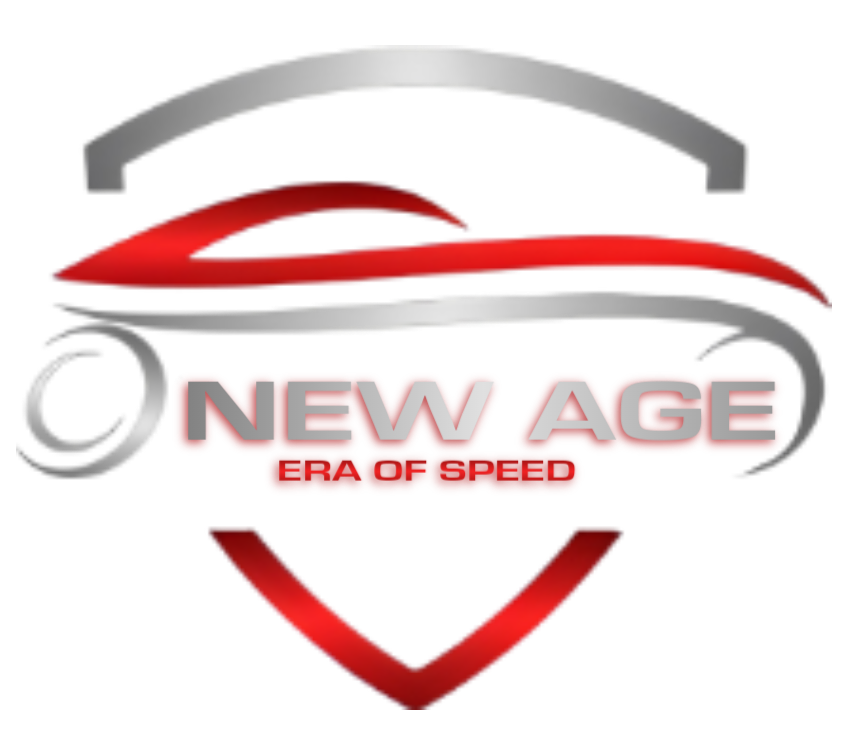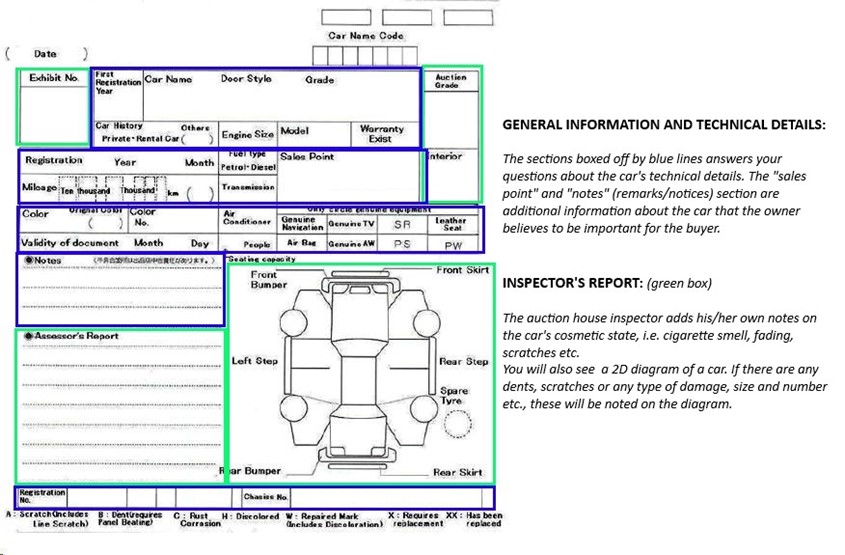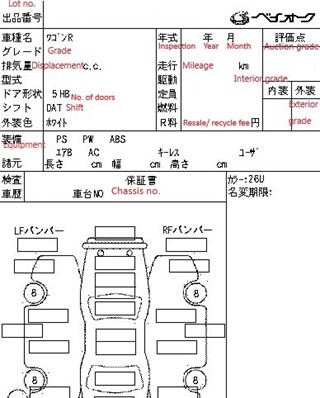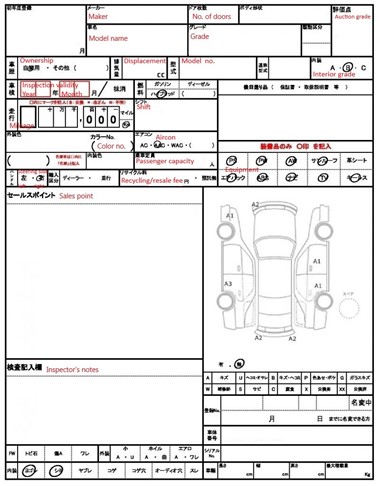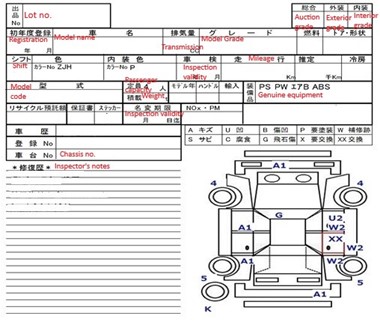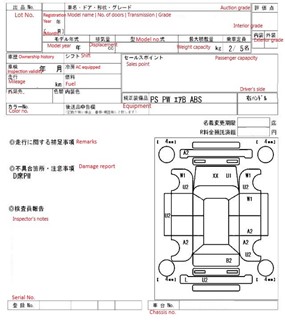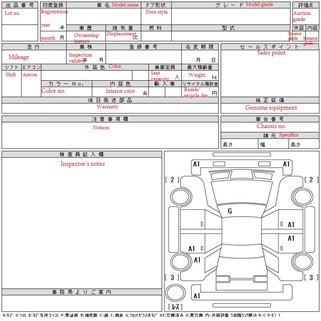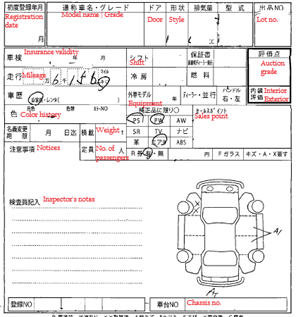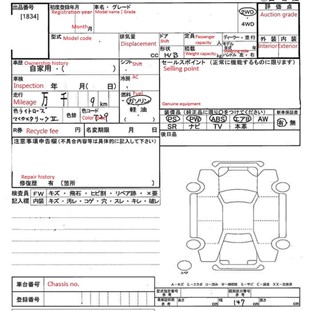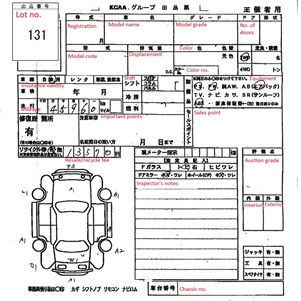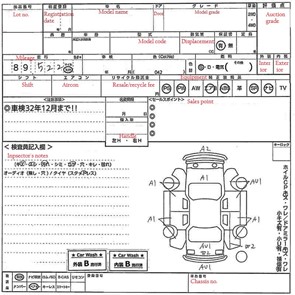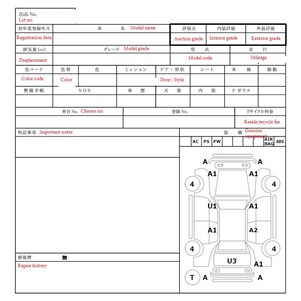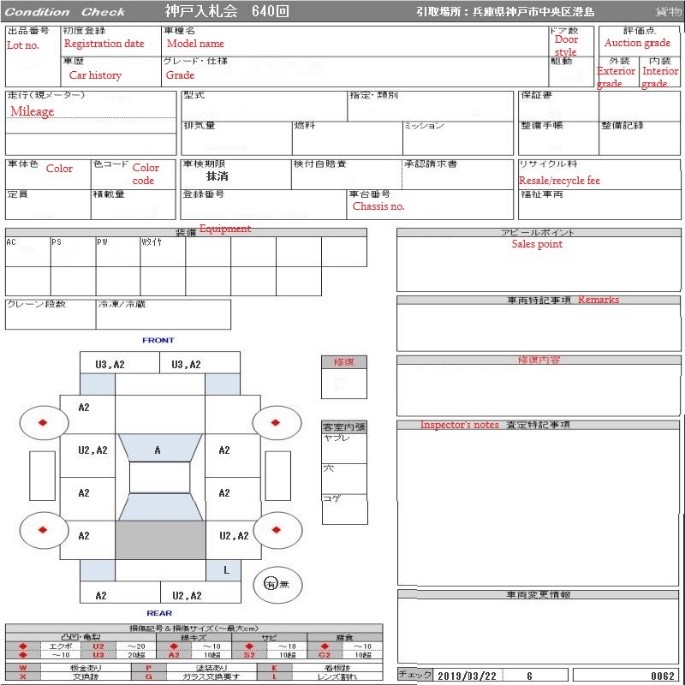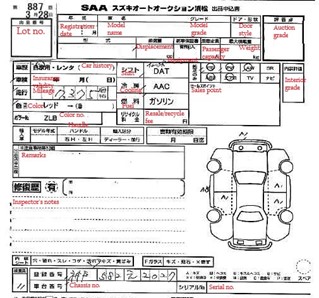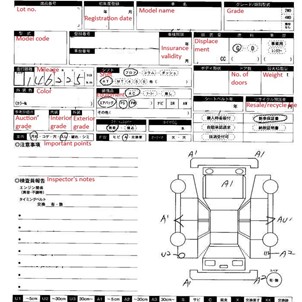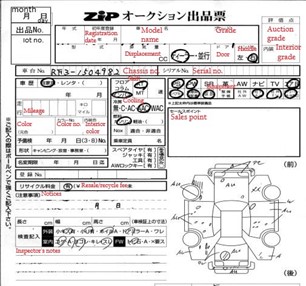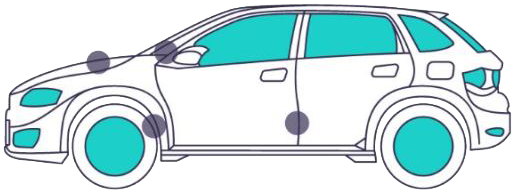An auction sheet is one of the best free reference material that you can have when it comes to buying a car from a Japanese auction house. Instead of taking a car out for a road test, you can instead have a thorough idea of its tech and mech pluses and faults. An auction sheet comes with a review from a trained and licensed auction inspector who has deep knowledge on Japan-built cars and vehicles. A similar inspection is not possible of cars that do not come from the auction. Truth is, a similar fact sheet is not available from any used car shop in your country.
This is all well and good for those who can read and understand Japanese. However, it loses purpose when potential customers are lost in translation. How then can you be convinced that the car you’re buying is ok or not if even the basic details are hiding in plain sight?
This article teaches you how to read auction sheets by providing translations and meaning to the Japanese characters you can find in it. You will find 19 actual auction sheets with the most important parts translated into English and also a table of the characters and abbreviations most commonly used between the various sheets.
There are several versions to a Japanese auction sheet, almost as many as there are auction companies. Some companies share an auction system, and so have the same auction sheet. To be specific, there are 21 most common sheets and three of them are shared. Though there are differences, most of the information in the sheets are the same.
Sample translated auction sheets from the biggest auction houses: For reference, download these translated sheets as PDF file here.
BAYAUC
ISUZU
JAA/HAA
NAA
ARAI
CAA/TAA
HERO
IAA
JU
KCAA
KMAA
MIRIVE
NOAA
NPS / ORIX
SAA HAMAMATSU
SAPPORO
USS
ZERO
ZIP
- 初度登録年月 (Registration year & month)
- Regardless of how many times the car has been resold and registered, this information refers to the first time the car has ever been registered by its original owner.
- モデル名/モデル年/モデルコード/モデルグレード/モデル番号/メーカー
- (Model name, Model year, Model code, Model grade, Model no., Maker)
- These six details all refer to specific identification of a car or vehicle. Physically, cars of the same maker and model may look the same, but the more specific information like the year, code, grade or number affects the price value of a vehicle in auction. It also affects the features available in a car. Knowing these details, can help you speed up your search for the car that will perfectly fit your budget and purpose. Some sheets have all these information on, but the owner may not fill them all.
- エンジン排気量
- (Displacement, engine capacity)
- Always measured in cc, many countries use the displacement as a factor to base their importing fees on, as in Jamaica.
- 重量容量
- (Weight capacity)
- Aside from the fact that a car’s weight capacity should tell you not to pack in 10 people in a Toyota March for optimal performance, the weight capacity also identifies a vehicle’s classification and which HS code it should be assigned. Some countries base off the international HS code to decide your vehicles importability and import duties.
- マイレージ (Mileage)
- エアコン (AC equipped)
- 本物の機器 (Genuine equipment)
- 定員数 (No. of passengers)
- ドア数 (No. of doors (door style))
- トランスミッション (Transmission)
- ドライバーサイド (Driver side)
- シフトタイプ (Shift type)
- 燃料タイプ (Fuel type)
- 色番号 (Color no.)
- 色の歴史 (Color history)
- 内装色 (Interior color)
- 外装色 (Exterior color)
- 保険の有効性 (Insurance validity)
- 保証の有効性 (Warranty validity)
- 所有履歴 (Ownership history)
- 修理履歴 (Repair history)
- リサイクル料 (Resale/Recycle fee)
- 車体番号 (Chassis no.)
- シリアル番号 (Serial no.)
- These set of details may or may not all be on the auction sheet because each sheet is different. When possible however, the former owner will fill out details like mileage, fuel type, transmission, genuine equipment. セールスポイント (Sales point)
- The owner can list down all the positive points of the car in the sales point box.
- 備考 (Notes/Remarks)
- The owner can list down any other information, good, bad or neutral, about the car (i.e. no spare key, reupholstery, repainting)
- ダメージレポート (Damage report)
- If a car has been in an accident or any similar situation, a note will be added here.
- 多く 番号 (Lot No.)
- Each car on auction is given a lot number that matches the place where it is parked. For buyers here in Japan, this lot number makes it easy for them to locate the car to inspect it. For those in remote location in or out of Japan, the lot no. can be used to find the car quickly when re-searching in an auction database.
- オークショングレード (Auction grade)
- The auction grade is the overall rating of a vehicle, taking into consideration the interior and exterior grades.
- 内装色 (Interior grade)
- Sometimes, a car’s interior may be better maintained than its exterior or vice-versa. Also, some parts of the interior may be better maintained than other parts. When possible, each gradable part is rated. A car’s exterior is very important for buyers. Each type of flaw and degree of damage has a corresponding code. It is the inspector’s job to make sure that each flaw is found, recorded and graded.
- 外装色 (Exterior grade)
- A car’s exterior is very important for buyers. Each type of flaw and degree of damage has a corresponding code. It is the inspector’s job to make sure that eachflaw is found, recorded and graded.
- 検査官のメモ (Inspector’s notes)
- Additional information about the car is written here, especially for sheets that have few technical details available. This space sometimes helps explain why the car has the auction grade it got. The notes are in Japanese. The notes help buyers in Japan decide to buy or bid on the car.
- 2D ダイアグラム (2D Diagram)
- Any notations on the diagram signifies a grade. A comprehensive list of exterior grading labels and their meaning can be found in AA Japan’s Auction knowledgebase.
Not all the items in this list can be seen in every auction sheet. Some sheets havefewer details than others and some auction companies have their own technical lingo.
As with all things in business, technology and life, these information are current only until the auction houses they refer to still use the same details. These details are best used as reference only, in addition to your own personal research.
Even if the two sentences may seem like dire warning, don’t you feel pretty cool for being able to download an auction sheet and explain it to your friend or client one day, and sounding like the Wikipedia of Japanese car auctions? But more importantly, don’t you feel just a tad bit more confident knowing that the next time you will call to Japan for a car from the auction, you will be able to discuss the merits of a car on a more equal footing?
